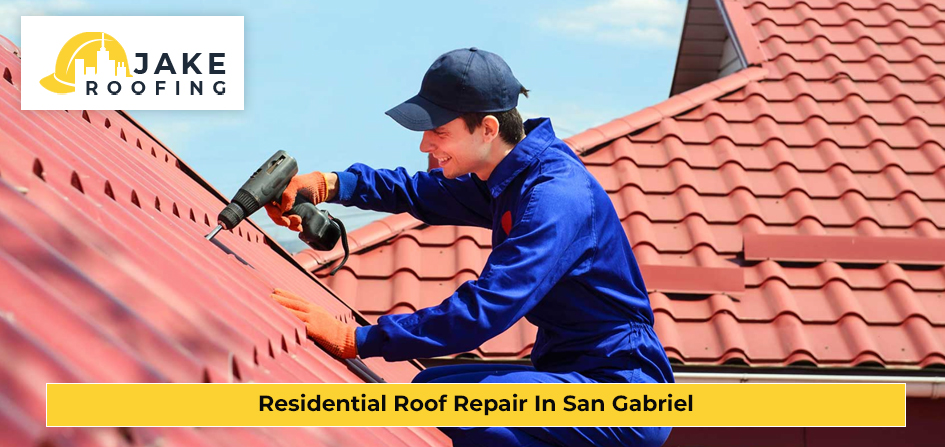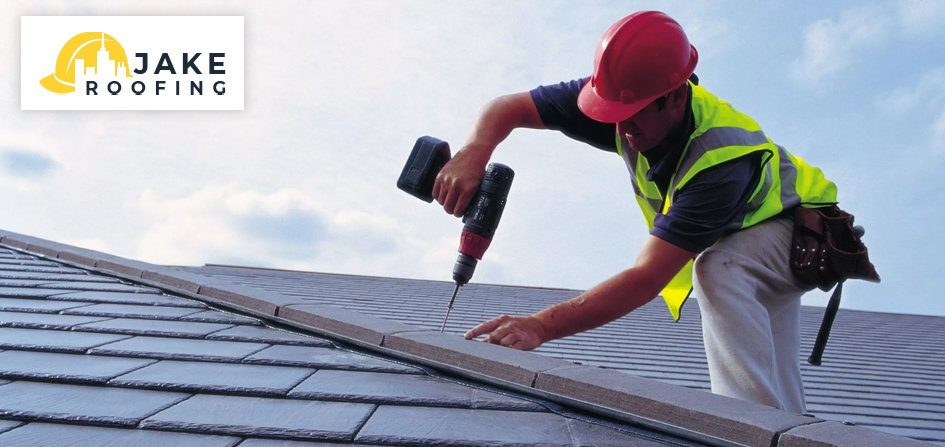The Impact of a Damaged Roof
So, why do you need residential roof repair in San Gabriel? Well, it is important for a number of reasons, including
Water Leaks
A damaged roof can lead to water leaks, resulting in water intrusion into the interior of the house. This can cause damage to ceilings, walls, insulation, and even valuable possessions.
Structural Damage
If left unrepaired, a damaged roof can compromise the structural integrity of the entire house. Moisture seeping into the framework can weaken the wooden components, leading to sagging or even collapse in extreme cases.
Mold and Mildew Growth
Excessive moisture from a damaged roof can create an ideal environment for mold and mildew growth. This can negatively impact indoor air quality, leading to health issues such as allergies, respiratory problems, and other allergic reactions
Energy Inefficiency
A damaged roof can result in energy inefficiencies. Gaps or cracks in the roofing system can allow air to escape, leading to increased heating or cooling costs as the HVAC system works harder to maintain desired temperatures.
Decreased Property Value
A visibly damaged roof can significantly decrease the value of a residential property. Prospective buyers may be deterred by the potential costs and hassle of repairing or replacing the roof.

Pest Infestation
Holes or gaps in a damaged roof can serve as entry points for pests like rodents, birds, or insects. These unwanted guests can cause further damage to the property and pose health risks.
Safety Hazards
A damaged roof can pose safety hazards, particularly during severe weather conditions. Loose or missing shingles, for example, can become airborne and potentially cause harm to people or nearby property.
Sealing and Patching
Sealing and patching are some of the most common tasks for commercial roof repair in San Gabriel. It involves repairing small leaks, cracks, or punctures in the roofing system. The materials and steps involved can vary depending on the type of roof and the specific repair needs. Here is a general outline of the process
Materials
Roofing sealant or patching material
This can include products such as roofing cement, silicone-based sealants, or specialized roof patching materials
Roofing brush or roller
Used to apply the sealant or patching material
Roofing fabric or mesh (if necessary)
Used to reinforce the patch in certain cases
Roofing nails or screws (if necessary)
Used to secure the patching material

Steps to be Followed
Preparation
Clean the damaged area of the roof by removing any loose debris, dirt, or old sealant. Use a broom or brush to sweep away loose particles and ensure a clean surface for the patching material to adhere to. Our roofing company in San Gabriel can help in this respect, call us today!!!
Identifying the damage
Locate the source of the leak or damage. This may involve inspecting the roof from both the exterior and interior to determine the exact area that needs repair.
Applying the sealant or patching material
Depending on the type of material being used, follow the manufacturer’s instructions for proper application. Generally, the sealant or patching material is spread or brushed onto the damaged area, ensuring complete coverage over the affected surface
Reinforcement (if necessary)
In cases where the damage is more severe or the patching material needs additional strength, a roofing fabric or mesh can be embedded into the sealant or patch. This provides added reinforcement and stability
Smooth and blend
Use a roofing brush or roller to smooth out the applied sealant or patching material, ensuring a uniform and seamless appearance. This helps to blend the repair with the surrounding roof surface.
Allow for curing or drying
Depending on the specific product used, allow sufficient time for the sealant or patching material to cure or dry as per the manufacturer’s instructions. This ensures proper bonding and effectiveness of the repair.
Replacing Roofing Shingles
Roofing shingle replacement involves removing damaged or worn-out shingles from a roof and installing new ones in their place. It is necessary when shingles are cracked, curled, missing, or otherwise deteriorated. Shingle replacement is crucial to maintain the integrity of the roof, prevent water leaks, and ensure the long-term protection of the underlying structure.
Shingle Replacement
The process of roofing shingle replacement generally follows these steps
Inspection
A roofing contractor will inspect the roof to assess the extent of the shingle damage and determine the appropriate replacement strategy. They will identify areas where shingles need to be removed and replaced.
Shingle removal
The damaged shingles are carefully removed using tools such as a pry bar or shingle shovel. It is important to exercise caution to avoid damaging adjacent shingles or the underlying roof deck.
Preparation
Once the damaged shingles are removed, the underlying roof surface is inspected for any additional damage or issues. The area is cleaned of debris, ensuring a smooth and clean surface for the new shingles to be installed.
New shingle installation
The new shingles are installed starting from the bottom edge of the roof, typically in overlapping rows. The specific installation method depends on the type of shingles being used, such as asphalt, wood, or composite shingles. Nails or roofing adhesive may be used to secure the shingles in place.
Flashing and edge finishing
The replacement shingles are installed around any roof penetrations, such as chimneys or vent pipes, with the necessary flashing to ensure proper waterproofing. The edges of the roof are finished with edge flashing or drip edge to provide a clean and watertight seal.
Cleanup
Once the shingle replacement is complete, the work area is thoroughly cleaned of any debris or leftover materials. The contractor will ensure that the surrounding property is free from nails or other potential hazards.
Other Tasks for Residential Roof Repair in San Gabriel
Here are some other critical tasks for residential roof repair in San Gabriel
| Task | Process |
|---|---|
| Flashing Repair/Replacement |
|
| Gutter Repair |
|
| Skylight Repair |
|

Frequently Asked Questions
The documentation and information required for a roof repair permit application can vary depending on local regulations. Generally, you may need to provide details such as the property address, property owner’s information, description of the repair work, contractor information (if applicable), and sometimes a roofing plan or specifications. Additionally, you may be asked to pay permit fees and provide proof of insurance.
Before the roof repair work begins, it’s recommended to remove any valuable or fragile items from the attic or upper floor to protect them from potential dust or debris. Clear the areas around the perimeter of the house to ensure easy access for our team and protect any delicate landscaping.
In many cases, homeowner’s insurance policies cover roof repairs resulting from sudden or accidental damage, such as storms or fallen trees. However, coverage can vary depending on the specific policy terms, deductibles, and the cause of the damage. It’s advisable to review your insurance policy, document the damage thoroughly, and consult with your insurance provider to determine the coverage and claims process for roof repairs.
